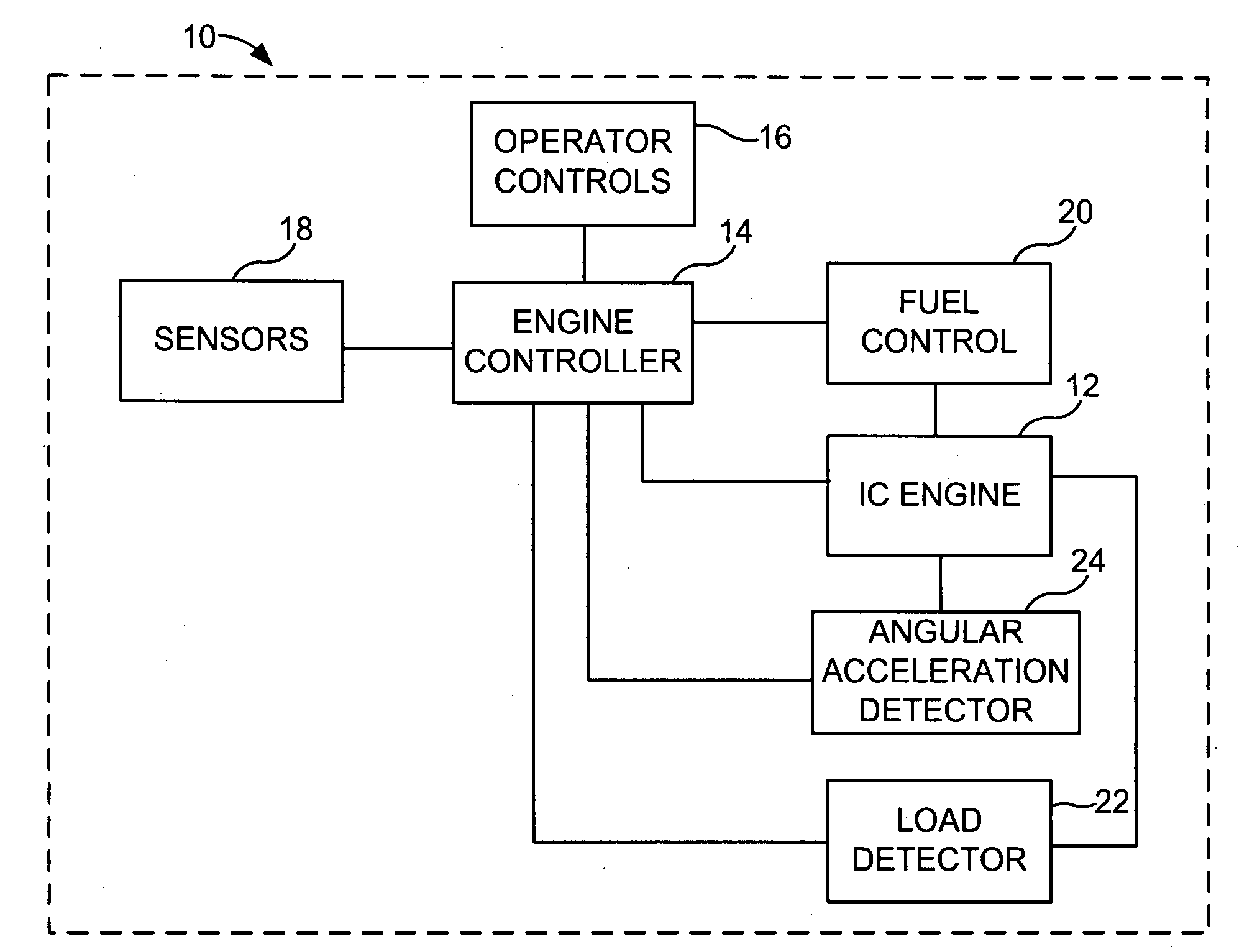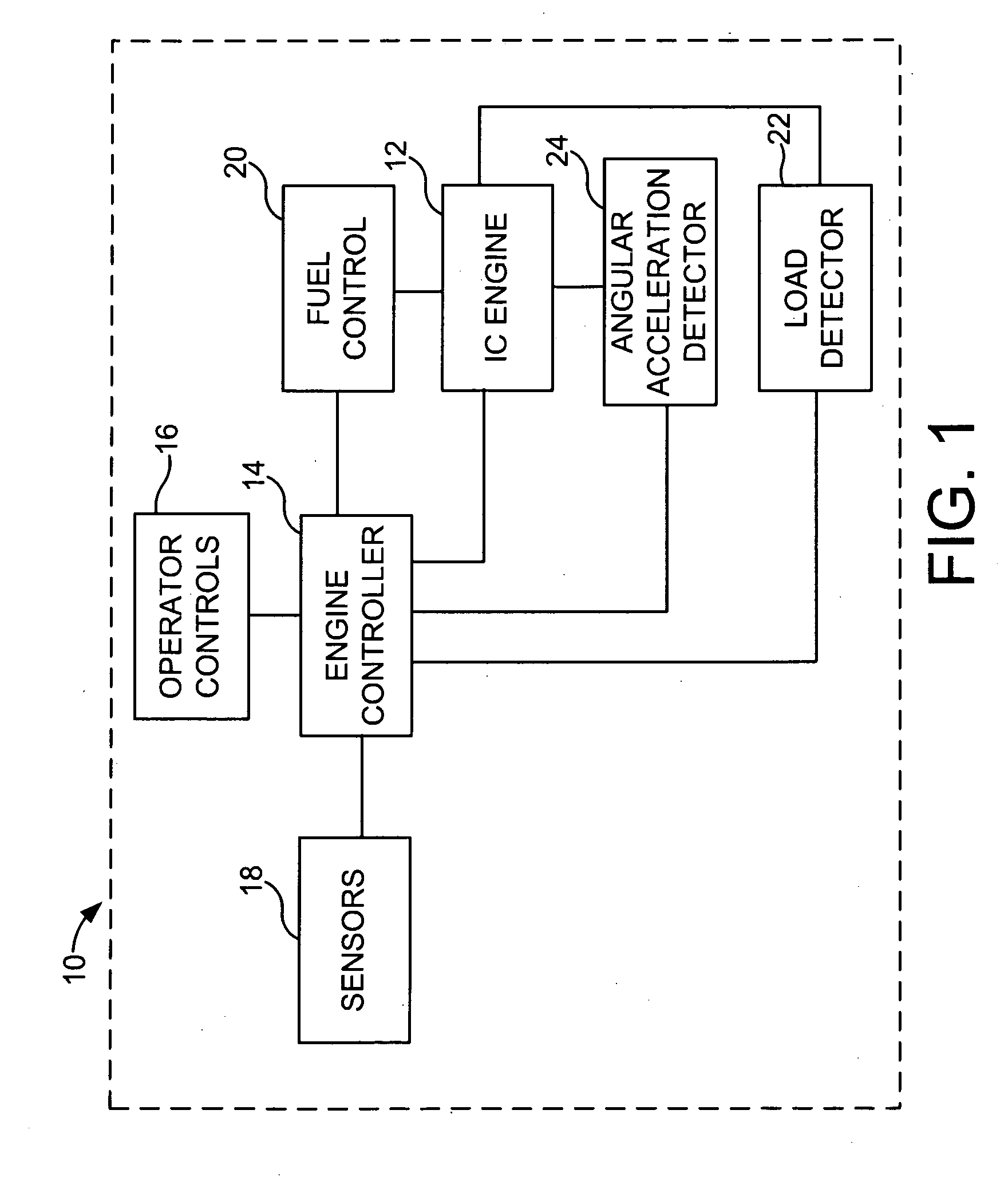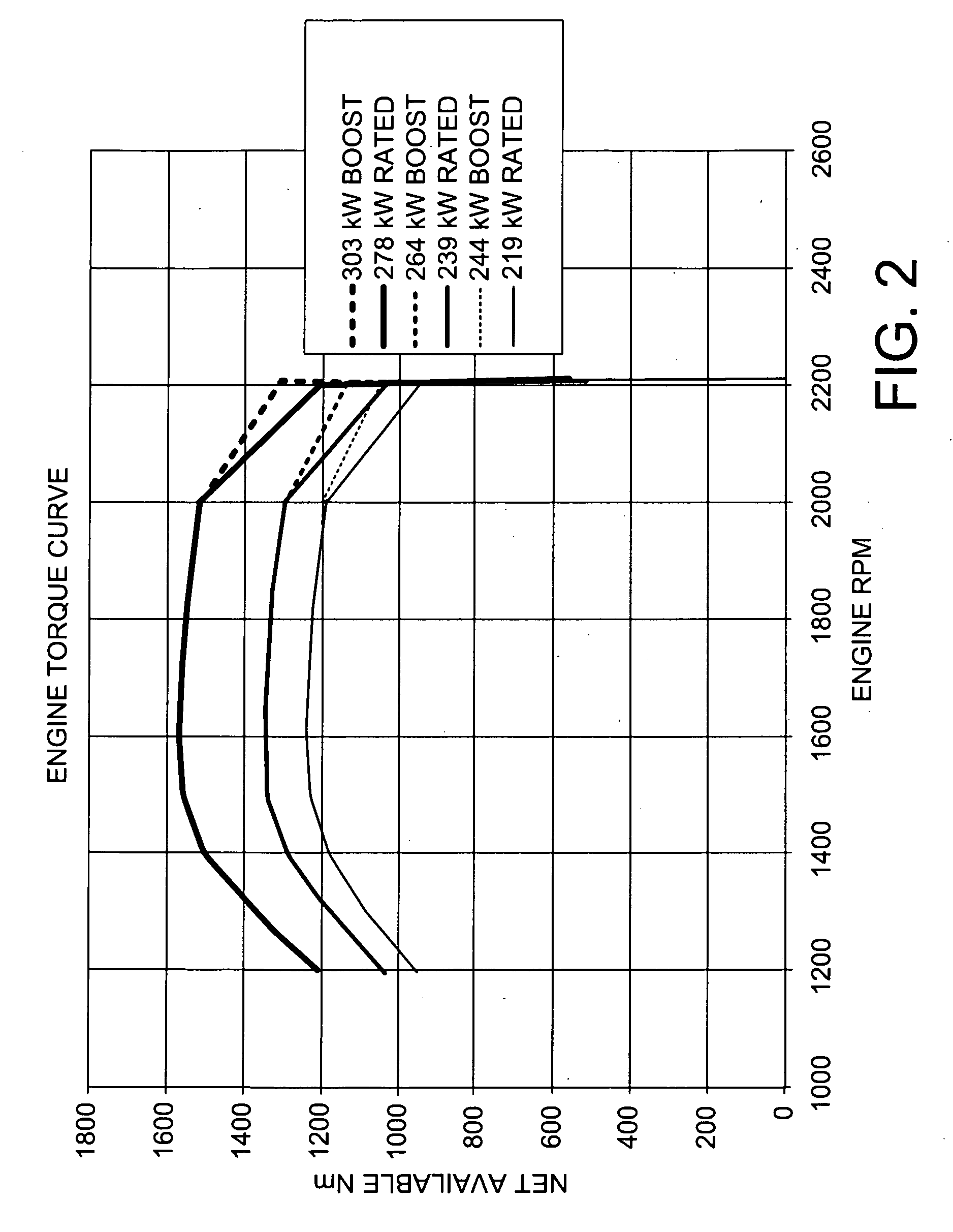Method of selecting engine torque curves
a torque curve and engine technology, applied in the field of work vehicles, can solve the problems of short duration overload, high fuel consumption, and work vehicles such as combines also spend significant time at very light loads, and not return as good fuel economy
- Summary
- Abstract
- Description
- Claims
- Application Information
AI Technical Summary
Benefits of technology
Problems solved by technology
Method used
Image
Examples
Embodiment Construction
[0017]Referring now to the drawings, and more particularly to FIG. 1, there is shown a schematical view of an embodiment of the work vehicle system 10 of the present invention for operating an internal combustion (IC) engine 12. System 10 is part of a non-road work vehicle such as an agricultural tractor, combine, construction equipment, etc. IC engine 12 is configured as a diesel engine, but could also possibly be configured as a spark ignition engine. IC engine 12 is sized to accommodate the non-road vehicle.
[0018]Work vehicle system 10 further includes an engine controller 14, operator control 16, sensors 18, a fuel control system 20, a load detector 22, and an angle acceleration detector 24. Engine controller 14 is located on board the non-road vehicle and controls various electronically controllable functions of the vehicle. For example, in the event the non-road vehicle is configured as a combine, engine controller 14 can control the engine rpm and other functional aspects of ...
PUM
 Login to View More
Login to View More Abstract
Description
Claims
Application Information
 Login to View More
Login to View More - R&D
- Intellectual Property
- Life Sciences
- Materials
- Tech Scout
- Unparalleled Data Quality
- Higher Quality Content
- 60% Fewer Hallucinations
Browse by: Latest US Patents, China's latest patents, Technical Efficacy Thesaurus, Application Domain, Technology Topic, Popular Technical Reports.
© 2025 PatSnap. All rights reserved.Legal|Privacy policy|Modern Slavery Act Transparency Statement|Sitemap|About US| Contact US: help@patsnap.com



